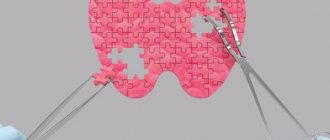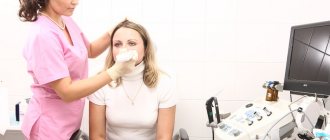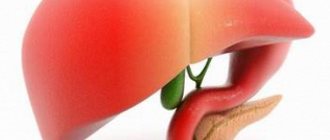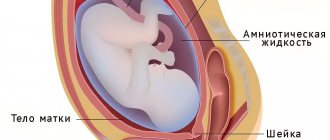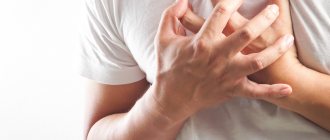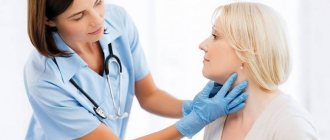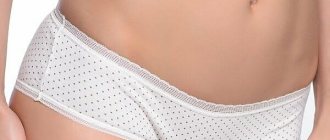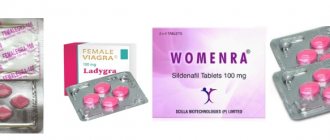Low pressure
– a condition accompanied by a drop in blood pressure below
120 to 80 . WHO indicates that any reading below 100/60 mm Hg. Art. is low pressure.
But here it is necessary to proceed not from standardized indicators, but to make exceptions due to the individual characteristics of the organism. Physiological reduction in blood pressure. People who have a predominant influence of the parasympathetic nervous system are prone to hypotension and feel great with a blood pressure of 90/60 or even lower. Increasing these numbers to normal, from the point of view of doctors, causes a disturbance in the general condition of such people.
Pathological decrease is true hypotension. It is a drop in blood pressure levels below those that are normal for a particular person, and is accompanied by additional symptoms:
- Lethargy, weakness, general weakness and malaise.
- Occipital headaches.
- Feeling of lack of air, especially in rooms with many people.
- Increased sweating, fatigue and shortness of breath.
- Dizziness, especially when suddenly moving from a lying position to an upright position.
- Nausea and vomiting.
- Low blood pressure and high pulse
What is blood pressure
Blood pressure (BP) is one of the health constants by which one can judge the state of the body.
This concept is associated with the constant work of the heart muscle, which, like a pump, pumps blood into large vessels. As blood flows through arteries, it puts pressure on their walls. Blood pressure indicators depend on the elasticity of the walls of blood vessels and the volume of blood entering them at the time of contraction of the heart muscle.
Normal blood pressure in an adult is 120/80 mm. Hg Art. The first number is the pressure at the moment of maximum contraction of the heart muscle, it is called systolic or upper. The second characterizes blood pressure at maximum relaxation of the heart - this is the lower or diastolic pressure.
Normal pressure indicates a sufficient level of oxygen in the blood and high elasticity of the walls of blood vessels.
Blood pressure indicators are affected not only by the work of the heart and the condition of blood vessels; they can change under the influence of a number of factors, for example, emotional state, weather, physical activity.
Blood pressure needs to be constantly monitored. And immediately contacting a doctor in the event of a persistent decrease or increase will allow you to identify health problems at an early stage and avoid the risks of developing serious pathologies.
Necessary examinations
A comprehensive assessment of the patient’s condition is carried out by a cardiologist, nephrologist, neurologist, and endocrinologist.
Sometimes the first symptom is menstrual irregularity, and a woman turns to a gynecologist.
Such a “consilium” of specialists will help quickly understand the problem.
Approximate research scheme:
- Anamnesis collection. Including determination of family predisposition to hypotension.
- Interviewing the patient for complaints.
- Blood pressure measurements on both arms. The fact of deviation is established.
- Holter monitoring for 24 hours. The most informative procedure.
- Electrocardiography with stress tests to identify the etiology of the process.
- Tests of blood, urine, hormones of the thyroid gland, adrenal cortex, pituitary gland, sex substances (estrogen, progesterone, SHBG, LH, prolactin).
- Ultrasound of the kidneys and pelvis.
- If necessary, MRI, CT diagnostics. Especially if neoplasia (tumor) is suspected. Possibly with contrast enhancement with gadolinium preparations.
- Gynecological examination, palpation of the kidneys, assessment of neurological status.
- Electroencephalography.
Consistency is the main condition. Making a diagnosis does not take much time.
Causes of low blood pressure
A decrease in blood pressure by no more than 20 mm Hg. Art. - this is a relative norm; usually these fluctuations are temporary and do not affect general well-being. Pathology is indicated when for a long time the readings do not exceed 100/60 mmHg. Art. This condition is called arterial hypotension and is divided into several types:
- Physiological. Low pressure at rest is often observed among professional athletes, people working in hazardous industries, and living in high mountain areas with a rarefied atmosphere. It is also observed in those living in conditions of very low or high temperatures, for example, in the Far North or in regions with a tropical climate. This type of hypotension is called adaptive or compensatory.
- Pathological, that is, arising against the background of systemic diseases or decreased physical activity. This condition leads to poor circulation. Disruption of the mechanisms of blood pressure regulation and the development of hypotension can occur due to hormonal imbalance, for example, with hypothyroidism or adrenal dysfunction. Hereditary predisposition also plays a major role. Another reason for a sudden decrease in blood pressure may be an acute allergic reaction - anaphylactic shock.
- Neurogenic - diagnosed mainly in adolescence, often as a result of brain injuries or autonomic disorders. This type of hypotension occurs due to dysfunction of the nervous system or problems with cerebral circulation.
- Medication. The reason for a sharp decrease in blood pressure is often due to uncontrolled use of drugs to lower blood pressure or diuretics.
Low blood pressure can be a symptom of various diseases, in this case they speak of secondary arterial hypotension. A decrease in pressure is typical for osteochondrosis, inflammatory infectious diseases, heart failure, stomach ulcers and a number of others.
A sharp decrease in pressure can occur against the background of anaphylactic shock, severe bleeding, intoxication of the body, and prolonged dehydration. The tonometer will show low blood pressure values in case of chronic fatigue, constant lack of sleep, depression.
Hypotension can also be a consequence of poor nutrition, when a person, in order to quickly lose weight, switches to a diet with a significant calorie deficit. In women, blood pressure often drops when there is heavy bleeding during menstruation.
Important! The choice of drugs to increase and decrease blood pressure cannot be made independently or on the advice of friends. This can aggravate the situation and lead to irreversible consequences.
Only a doctor can understand the reasons for the decrease in pressure and prescribe the correct treatment after conducting a comprehensive examination.
Pathological factors for all ages
Among the possible somatic diseases:
- Hypothyroidism. Insufficient production of thyroid hormones. Associated with a low amount of iodine in the diet and a possible history of tumors. The process is accompanied by a mass of additional symptoms that are difficult to miss.
- Diabetes. Systemic pathology associated with destruction of the pancreas or insufficient tissue susceptibility to insulin (resistance).
- Hypocorticism or Addison's disease. Inadequate synthesis of cortisol by the adrenal cortex due to pathologies of the paired organ itself or changes in the functional activity of the pituitary system (the culprit is a tumor of a small gland that does not synthesize hormones, grows rapidly, gives a lot of symptoms and causes compression of surrounding tissues).
- Osteochondrosis and vertebrobasilar syndrome are a common cause of low blood pressure in women. The disease occurs in every second person in the population.
The trophism (nutrition) of special brain structures responsible for adequate regulation of vascular tone is disrupted.
This includes changes in circadian rhythms (if the hypothalamus suffers). Everything can end with a stable decrease in the woman’s blood pressure level.
- Constant bleeding. With menstrual irregularities such as menorrhagia, opsomenorrhea is the most common manifestation. Inadequate volumes of hematological fluid loss lead to a decrease in hemoglobin levels or a significant drop in the amount of circulating blood (after childbirth, uterine problems).
- Iron deficiency anemia and its other forms. Accompanied by a decrease in the concentration of a specific transport substance in the body.
Women are most susceptible to this pathological condition. In addition to gynecological factors, other causes are possible: gastrointestinal bleeding (stomach ulcer), pulmonary problems.
- Diseases of the kidneys and excretory system: glomerulonephritis, nephritis, nephropathy and others. They are explained by a decrease in the volume of fluid in the body due to severe polyuria and, as a result, dehydration. An increase in water concentration leads to the opposite process: hypertension.
Clarification of the etiology is necessary to prescribe competent therapy.
Symptoms of Low Blood Pressure
Manifestations of hypotension depend on the causes of its occurrence and the form of the disease. If the pressure drops due to an existing disease, then the main symptoms will be precisely the signs of the underlying pathology. These will be supplemented by a constant feeling of fatigue, general weakness, irritability, rapid pulse, headache, and increased sweating.
Physiological hypotension is most often a common condition for a person, and he may not experience any discomfort.
With a sharp decrease in blood pressure, a person may lose consciousness or complain of:
- dizziness;
- vision problems;
- lack of confidence when walking;
- difficulty breathing.
In this condition, there is significant paleness of the skin, unsteadiness of gait, some confusion, and inhibited speech are possible.
An acute condition requires immediate medical attention.
Important! If you notice a change in a person's facial expressions, loss of orientation, severe shortness of breath or excessive agitation with signs of hallucinations, call an ambulance immediately. These symptoms are characteristic of pre-stroke and pre-infarction conditions - in them every minute is precious.
Is this condition dangerous?
Yes, there are risks with prolonged development of hypotension. Possible consequences of low blood pressure include:
- Stroke. As a result of a drop in local cerebral hemodynamics (local blood flow), ischemia (lack of nutrition) of nerve tissues occurs and their subsequent death.
Neurological symptoms develop. It all ends, at a minimum, in disability. Death is also possible.
Read about the symptoms of pre-stroke conditions in women here. The consequences of ischemic stroke and the prognosis for patient survival are here.
- Heart attack. Death of the myocardium (the middle muscular layer of the organ). Ends with the death of the patient. In case of survival, the development of cardiac failure and coronary artery disease is likely.
Without help, a relapse occurs (within 2-3 years). Symptoms of a pre-infarction condition are described in this article.
- Decreased brain activity. The patient is unable to think normally and her memory is deteriorating. The picture resembles manifestations of dementia praecox; the symptom develops with ischemia (oxygen starvation) of the brain due to low pressure.
- Fainting. They end in injuries, sometimes severe or even fatal. Especially while driving a vehicle.
- Mornaghi-Adams-Stokes syndrome and subsequent cardiogenic shock.
Death is a rare complication, but possible. Correction of the condition for prevention is important.
How to increase blood pressure quickly and effectively
Source: Raeann Buskey/Pixy.org
Only a doctor can prescribe medications for high blood pressure. But it is possible to help a person in an acute situation and alleviate his condition during a sudden attack of hypotension without medications.
Coffee
Drinking a cup of strong, freshly ground coffee is the best solution. Caffeine has a pronounced vasoconstrictor effect, so it reduces blood pressure well and has a tonic effect.
Massage
Impact on some biologically active points irritates the nerve endings and activates the blood circulation process. Massage has a beneficial effect on all body systems, accelerating metabolism and toning blood vessels.
Important! Massage is a procedure for actively influencing the body and should be trusted to professionals with medical education. Incorrect massage technique can cause significant harm to health.
Massage can improve mood, relieve spasms, relieve headaches and joint pain, and normalize sleep.
Increasing blood pressure with nutrition
If low blood pressure is not associated with internal diseases, then it can be easily normalized by including some foods in the diet:
- green tea - it tones well and improves blood circulation;
- kefir, fermented baked milk, yogurt, cottage cheese and other fermented milk products;
- celery root, which can be added to salads or other dishes;
- strawberries, fresh vegetables and fruits - carrots, tomatoes, pumpkin, apples;
- beet juice.
The diet for hypotension is aimed at increasing the overall tone of the body, replenishing the deficiency of vitamins and minerals, accelerating metabolic processes and normalizing the water-salt balance.
Pharmacy tinctures
Herbal tinctures are widely used to increase blood pressure and generally strengthen the body. To be safe and avoid the risk of incorrect dosage, it is better to buy tinctures at a pharmacy and strictly follow the directions on the package. And in the future, it is better to consult a doctor and choose the formulations that he recommends.
Ginseng tincture
Ginseng root has been used medicinally for over two thousand years. One of the main properties of this plant is its ability to regulate blood pressure. Depending on the dosage, ginseng root tincture is used to both increase and decrease blood pressure.
A decrease in blood pressure when taking the tincture occurs due to:
- increasing the overall tone of the body;
- strengthening the walls of blood vessels;
- improved appetite;
- normalization of emotional state;
- acceleration of metabolic processes.
Before taking ginseng tincture, you should consult your doctor and make sure there are no contraindications.
Eleutherococcus tincture
It is a proven remedy for nervous disorders, problems with the immune system and low blood pressure.
It is believed that the product improves performance and speeds up metabolism. It is prescribed for general exhaustion of the body, physical overload, anemia, and atherosclerosis. The biologically active substances contained in the tincture increase vascular tone and normalize blood pressure.
The dosage and duration of treatment is determined by the doctor based on the severity of symptoms and the absence of contraindications.
Schisandra tincture
Chinese lemongrass is a type of climbing vine. Its fruits, which contain essential oils, organic acids and microelements beneficial to the body, are used in medicine.
Schisandra tincture increases vascular tone and has a general tonic effect. The product can be used to quickly raise blood pressure and normalize well-being.
Important! All herbal products can only be used as adjuvant therapies. They should be taken only after consultation with your doctor at the recommended dosage.
Physiotherapy for hypotension
Physiotherapy is often used to treat various medical conditions. The greatest effect can be achieved by using this method in combination with other therapeutic interventions. What procedures are indicated for a person with low blood pressure?
- Irradiation with ultraviolet light using special lamps that act through the skin of the body on the vascular system accelerates blood circulation.
- Use of decimeter current. Using electrical impulses, the adrenal glands are stimulated, which release hormones to increase blood pressure.
- Hypotension can be treated with cryotherapy. The essence of this therapy is as follows: a person spends some time (up to 3 minutes) in a special chamber. There, the combination of air and nitrogen creates a low temperature (up to minus 160 degrees). Getting from an ordinary environment to an extreme one, and then going back to an ordinary one, a person is exposed to sudden changes in temperature.
- Electrophoresis procedures on the collar area using potassium salts help enhance the conduction of nerve impulses.
- Water procedures have a beneficial effect on the condition of hypotension. For example, treatment with a circular shower (otherwise known as Charcot's shower) involves massaging the body with jets of water, which are applied in different directions and with different intensities (in the form of a fan, raindrops, etc.). Therapeutic baths are often used in spas. For example, baths with iodine and bromine, with nitrogen, radon or pine needles.
- A massage parlor is a place where benefits are combined with pleasant sensations. For hypotensive patients, an important area of manual intervention will be the cervical region and shoulders.
Like any treatment, physiotherapy should be used unless there are contraindications.
How to increase blood pressure urgently
Source: CC0 Public Domain
If the pressure has dropped sharply, and there are no medications at hand, it can be quickly increased using the following methods:
- eat something salty, for example, a pickled cucumber, a tomato or a slice of well-salted lard;
- drink a lot of plain clean water;
- Brew strong coffee and drink in small sips.
In case of repeated attacks, you should consult a general practitioner or cardiologist and undergo a comprehensive examination.
Increased blood pressure without medication
Some people do not trust traditional medicine and prefer to be treated with folk remedies. If you feel unwell due to a sudden drop in blood pressure, for example, due to a sudden change in weather or a long flight, you can try to raise it without medication:
- take a contrast shower;
- eat a few slices of dark chocolate;
- drink a couple of cups of strong natural coffee - yes, coffee can really help quickly.
However, if hypotension is associated with existing diseases, it is better to avoid such express methods so as not to harm the body.
Medicines for high blood pressure
Medicines to increase blood pressure are prescribed in emergency cases or for prolonged hypotension. The choice of drug is based on the nature of the disease and examination results.
The main groups of drugs for lowering blood pressure:
- Caffeine-based drugs are used to urgently increase blood pressure in critical situations. They are administered intramuscularly or intravenously by emergency or hospital doctors. Caffeine is contraindicated in cases of cardiac arrhythmias and heart failure.
- Analeptics that affect the respiratory and vasomotor centers of the brain.
- Glucocorticoids - increase blood pressure by constricting blood vessels; they are used quite rarely due to the large number of side effects.
- Adrenergic agonists that affect the muscles of the heart, blood vessels and some other drugs.
Any drugs to increase blood pressure are used only as prescribed by a doctor and strictly in the dosage prescribed by him.
Secondary hypotension
If primary hypotension is considered an independent disease, then the secondary form is a consequence of other systemic diseases:
- pathologies of the cardiovascular system (cardiovascular system);
- osteochondrosis of the spine (cervical spine);
- previous brain injuries;
- diseases of the gastrointestinal tract (gastrointestinal tract);
- respiratory diseases;
- diabetes;
- malignant/benign neoplasms;
- circulatory dysfunction;
- alcoholism;
- the result of long-term use of medications.
Tips and tricks
Arterial hypotension is a dangerous condition that can be a harbinger of serious problems with cerebral circulation and the first sign of an impending stroke or heart attack. There are different ways to increase blood pressure, but all of them must be approved by your doctor.
Any problems with the heart and blood vessels must be addressed comprehensively, and self-medication is unacceptable here. You should also not rely too much on traditional medicine - medicinal herbs can be part of a therapeutic complex only as auxiliaries.
To normalize blood pressure, you should avoid stressful situations, get enough sleep, give up bad habits and pay attention to a proper diet.
Prevention
The best way to prevent hypotension is an active lifestyle. A balanced diet, regular physical activity (exercise, going to the gym), and proper rest will help normalize blood pressure.
To strengthen vascular tone, water procedures are recommended: contrast showers, swimming. Positive emotions, lack of stress, psychotherapy for depressive and hypochondriacal conditions will also help prevent the occurrence of hypotension
Hypertension Hemorrhagic cerebral stroke Microstroke Glaucoma Increased intraocular pressure: symptoms, causes and treatment Hydrocephalus of the brain in children
How to improve blood pressure permanently
To consolidate your success, you can make changes to your lifestyle and increase your blood pressure for a long time. For example, you can:
- Switch to a diet with a high salt content - but only a little, it is important not to go beyond the adequate recommendations;
- Reduce consumption of alcoholic beverages;
- In hot weather, drink more fluids;
- Ask the doctor to evaluate the medications the person is prescribed to take. Perhaps some of them have hypotension as a side effect;
- Play sports - at least 150 minutes of physical activity per week;
- Reduce the time you spend standing still.
If necessary, your doctor may recommend elastic compression stockings that cover the calf and thigh. They will help limit blood flow to your legs—and keep more blood in your upper body.
Treatment with folk remedies
Table of remedies to combat hypotension at home:
| № | Traditional medicines | Other methods |
| 1 | Hawthorn tincture | Fold your arms across your chest, pressing your palms together, for 3 to 5 minutes. |
| 2 | Eleutherococcus extract | Physical activity, regular sports |
| 3 | Ginseng | Dancing, aerobics, running |
| 4 | Burdock root | Including protein foods rich in fats in the diet, it is beneficial to eat salty foods |
| 5 | Combination of yarrow, tansy and immortelle | Coffee |
The first aid for low blood pressure is caffeine. Regular coffee will do. It will temporarily increase blood pressure and tone.
When the effect ends, the pressure may drop again or remain at normal levels. It depends on what reasons provoked its decline. Use the drug Citramon, it contains caffeine.
Another effective folk remedy is taking Eleutherococcus extract. This is an alcohol tincture that is taken drop by drop.
This remedy is based on natural herbal ingredients, it improves immunity, activates the work of the whole body, against the background of which blood pressure rises. Helps with increased heart rate.

